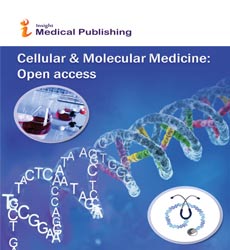Abstract
Lncrna Rn7sk and Cacna1g-As1 Related to the Scar Fibroblasts Proliferation in Burn Scars and Human Skin Cell
Background: Several mechanisms are thought to be essential for the development of burn scars, but there is still a challenge to study the lncRNA expression response to burn injury in the skin. The purpose of this study was to examine the changes in lncRNA expression in human skin after burn injury.
Methods: This was done by comparing pre-injury tissue from otherwise healthy adults, by virtue of a microarray gene expression profile. We first ranked gene sets (or gene signatures) that identify each class. A multiple-class classifier was built based on the gene sets. Then, gene networks associated with scars and burn injury was built in order to identify the hub genes to each class. Finally, the hub genes in the network were identified as important genes and tested in an In-vitro cell model.
Results: The set of genes considered significant for each of the classes is determined by a common threshold for the posterior probability. Burn wound has been assigned 6 genes as signatures, pre-injury healthy skin 5 genes, while scar only 2 genes. By gene networks, lncRNA RN7SK and CACNA1G-AS1 were shown with the higher discriminant power. In fibroblasts, overexpression of RN7SK and CACNA1G-AS1 increased migration and wound healing-rate by approximately 20% and 10% compared with the control group.
Author(s):
Lihua Wang and Zhiming Xin
Abstract | Full-Text | PDF
Share this

Google scholar citation report
Citations : 187
Cellular & Molecular Medicine: Open access received 187 citations as per google scholar report
Abstracted/Indexed in
- Google Scholar
- China National Knowledge Infrastructure (CNKI)
- Cosmos IF
- Geneva Foundation for Medical Education and Research
- Secret Search Engine Labs
Open Access Journals
- Aquaculture & Veterinary Science
- Chemistry & Chemical Sciences
- Clinical Sciences
- Engineering
- General Science
- Genetics & Molecular Biology
- Health Care & Nursing
- Immunology & Microbiology
- Materials Science
- Mathematics & Physics
- Medical Sciences
- Neurology & Psychiatry
- Oncology & Cancer Science
- Pharmaceutical Sciences

